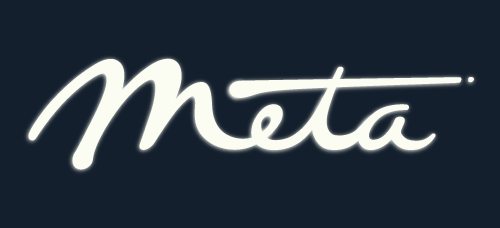
Pictures, Wikimedia Commons; article: Camera Obscura
This first lab will also help you get to know others in the course and what they are capable of. Think of this lab as a chance to show off to the rest of the class and build possible connections.
The word "camera" is an abbreviation of the Latin term "camera obscura"
which means "darkroom". "Camera" is Latin for "room",
and "obscura" is Latin for "dark".
Early cameras were large darkrooms and people would go inside the
camera to see the picture:

Pictures, Wikimedia Commons; article: Camera Obscura
Sometimes people would setup or build a tent or other struture and put a blank framed canvas inside to make a painting of what appeared there.
You might enjoy watching this video: Camera obscura on a houseboat https://www.youtube.com/watch?v=nye6iEMv33M
Also you might like to subscribe to my YouTube,
Hydraulist,
and watch these videos:
What is a camera? Fundamental lecture on what a camera is
and
Livestream lecture "What is a Camera?"
ECE516 week2 lectures camera obscura part2 making... from 2021
In the first part of the lab you will build 2 cameras, a large one and a small one, and experiment with various aperture sizes and note the effects of aperture size versus camera size on the sharpness and light qualities in the camera.
In the second part of the lab you will try to understand the mathematical principles behind this very simple form of imaging.
What is metaphotography?
 (link to photographic version of our logo)
(link to photographic version of our logo)
Meta is a Greek word that means "beyond", e.g. a meta-conversation is a
conversation about conversations, or a meta-argument is an argument about
arguments. Meta-data is data about data, e.g. the GPS location in which a
photograph was taken embedded into the header of a JPEG photo.
Meta is also the name of the Silicon Valley company founded by Steve Mann and his student Raymond Lo, along with Meron Gribetz, and Ben Sand, based on the technology of US Patent 9,720,505, "Extramissive spatial imaging digital eye glass...", Gribetz; Meron (New York, NY), Mann; W. Steve G. (Toronto, CA) , filed January 3rd, 2014, and US Patent and Trademark Office, Patent Application 61/748,468, Jan 3, 2013. See http://wearcam.org/meta/
Try various size openings from the whole window, to half window, quarter window, etc., and keep decreasing the size of the opening. This will help you understand the principle. No need to paint the walls black.| It works better if you have dark walls but try whatever is simplest first. You can try some black cardboard or black cloth on some of the walls to make the image a bit more crisp and contrasty, but start with whatever you can readily do with what you have handy.
If you don't have a room with a window that faces a bright scene, you can use a large box. I didn't have a box big enough for me to fit inside, so I found one that was big enough I could put my head inside the box, which still gave me the full "camera obscura" effect of being able to see the image. If you don't have a really big box handy, you could use a medium-sized box and cut 2 large holes for your eyes to look into, and of course a small hole for the pinhole.
The optimal pinhole size is based on a tradeoff between classical optics (i.e. that light travels in straight lines) and modern optics (diffraction effects). Classical optics would have that a smaller hole gives a sharper image. So a big window makes a really fuzzy image, but blacking out most of the window except for a small hole makes a sharper image. But today it is well-known that the far-field diffraction pattern is the Fourier transform of the electric field across the aperture. So when you make the aperture smaller the diffraction pattern gets bigger. Take a look at this for example from Lecture 1: http://wearcam.org/html5/mannkeynotes/images/plotter_stepper_motors_interference_patterns_varying_spacing.gif.
As you can see there is a kind of reversed effect: at some point a smaller hole gives you a fuzzier image.
A great deal of research has been done regarding the optimum aperture size. Here's the general formula for diameter of the aperture:
d=c √(fλ),
where
d = optimal hole (aperture) diameter;
f = focal length (distance from aperture to image plane);
λ= wavelength o
light, e.g. pick something around the middle of the range of
human vision such as green = 550nm (which is also the wavelength to which
human vision is most sensitive), or to which your sensor or film is most
sensitive;
c = a constant related to the Rayleigh criterion 1.22λ/d
(with some adjustment for other factors).
We usually use something in the range from c=1.56 to c=2.
So if your screen is 50cm from the aperture, the it should be about 1mm
in diameter. If the screen is
1 metre from the aperture, it should be about
1.5mm in diameter, and if 2 metres away, 2mm in diameter, 4 metres away,
3mm in diameter, and so on.
In 1891 Lord Rayleigh confirmed this value c=sqrt(2)
https://www.biodiversitylibrary.org/item/93442#page/9/mode/1up
but later published a 2nd paper
https://www.tandfonline.com/doi/abs/10.1080/14786449108620080
suggesting that c should be between sqrt(2) and 2.
More recently it has been suggested that the size of hole should optimize not just sharpness but also contrast, i.e. containment of stray light, and this paper proposed the optimum constant to be 1.56: https://www.kth.se/social/files/5c7fae6756be5bc7488edcb5/Pinhole%20camera.pdf
We often use something in the range c=1.5 to c=2.
After your demonstration in the lab, we'll have some fun and show you how to jump into the metaverse and beyond. To get the most out of this experience, please bring a computer with the following installed:
External links:
Meta photography (meta-documntary), also known as
"Through the Viewfinder photography":
https://en.wikipedia.org/wiki/Through_the_Viewfinder_photography
[Leonardo, Vol. 31, No. 2, pp. 93-102, 1998]
Flickr, "Through the Viewfinder":
https://www.flickr.com/groups/throughtheviewfinder/
Through the viewfinder howto:
https://blog.jpegmini.com/photography-tutorial-shooting-through-the-viewfinder/
#throughtheviewfinder
https://vimeo.com/104088954
https://kids.nationalgeographic.com/explore/books/pinhole-camera/
https://www.wikihow.com/Make-a-Pinhole-Camera
https://wonders.physics.wisc.edu/make-a-pinhole-camera/
https://en.wikipedia.org/wiki/Pinhole_camera
https://rimstar.org/science_electronics_projects/how-to-make-pinhole-camera-from-poster-board.htm